Extremophiles
Plants & microorganisms with the ability to survive and thrive in extreme environments (temperature, pressure, humidity). Unique source of substances such as Ectoin help preserve and strengthen skin.
Adaptogens
Botanical substances & compounds with rare protective effects. Adaptogenic extracts help delay the aging effects of oxidative stress.
Antioxidants
We’ve packed our formula with potent antioxidants specifically chosen for their ability to help diminish visible signs of aging caused by pollution and other environmental stressors.
Barriers
Our core anti-pollution ingredients are skincare innovations that stop nasty particles in their tracks. Chia seed extract and Biosaccharide Gum-4 form a protective barrier that is both light and strong to let you stay clear of air aging pollutants.
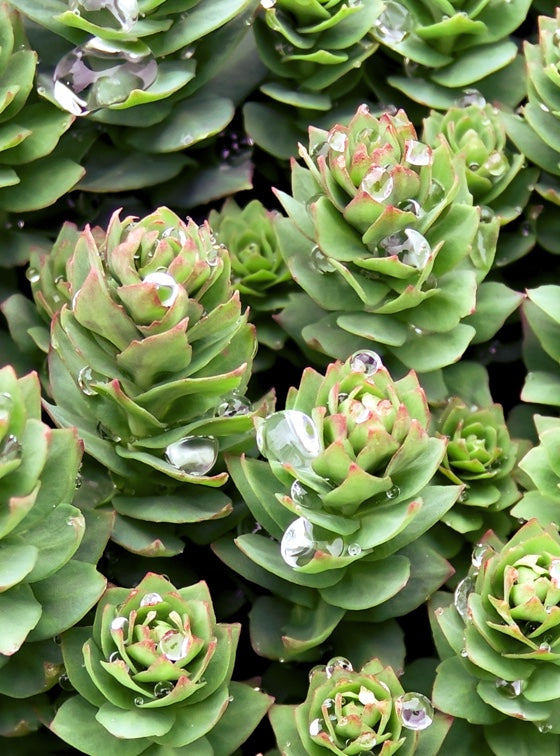
Arctic Root
Rich in powerful antioxidants (polyphenols & proanthocyanadins), this adaptogenic yellow flowering plant grows naturally in wild Arctic regions of Europe, Asia, and North America.
Rhodiola rosea (commonly known as arctic root, golden root, rose root, rosenroot, Aaron’s rod, king’s crown, or orpin rose) grows in wild Arctic regions and is a popular adaptogen.
....
Arctic Root was the first plant to be studied as an adaptogen, a source of non-toxic compounds that boost the body’s response to stress. It produces as many as 140 compounds and is the only plant to produce rosavin, rosin, and rosarin together, three phenolic compounds with clinically proven health benefits.
Rhodiola rosea extracts are a potent skin active thanks to their antioxidant compounds (including caffeic acid and gallic acid) and flavonoids that scavenge free radicals in the epidermis. They have been clinically shown to protect cell membranes from certain types of oxidative compounds and improve oxygen respiration in cells. Recent studies suggest that Arctic Root can also accelerate wound healing and act as an immunomodulator to reduce sensitive skin disorders, giving them wide applications in natural skincare and anti-aging products for sensitive skin.
....
Phytomedicine, June 2010, pages 481-493
Cosmeceuticals and active cosmetics, 2015, pages 107-111
The Scientific World Journal, September 2013, pages 1-5
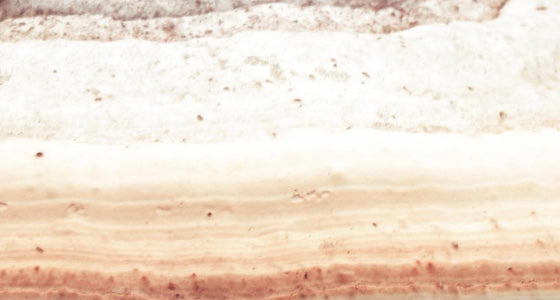
Chaga mushroom
Extremophile mushroom, often grows on birch trees. Can survive extreme cold. One of the most concentrated natural sources of superoxide dismutase. Improves appearance of skin with deep moisturizing effects.
Chaga mushroom (Inonotus obliquus) grows on birch trees in the circumboreal regions of Europe and Asia. It is a popular folk medicine in Siberia and has recently started attracting clinical attention for its potential benefits in the treatment of cancer and immune disorders as well as its uses in natural skincare.
....
Inonotus obliquus is rich in B-complex vitamins and triterpene compounds which have beneficial effects on inflammation and cell health. These triterpenes have been clinically proven to cause tumor cells to self-destruct without harming healthy cells. They also have immunomodulatory properties, helping the body’s immune system respond to stressors in a healthy way, which may help to control inflammation. Studies have shown chaga mushroom can protect cells from oxidative stress and inhibit premature cell aging.
....
Heliyon, May 2016, e00111
Molecules and cells, May 2011, pages 423-429
Nutrition research and practice, June 2010, pages 177-182
Phytotherapy Research, December 2009, pages 1784-1789
Mycobiology, August 2005, pages 158-162
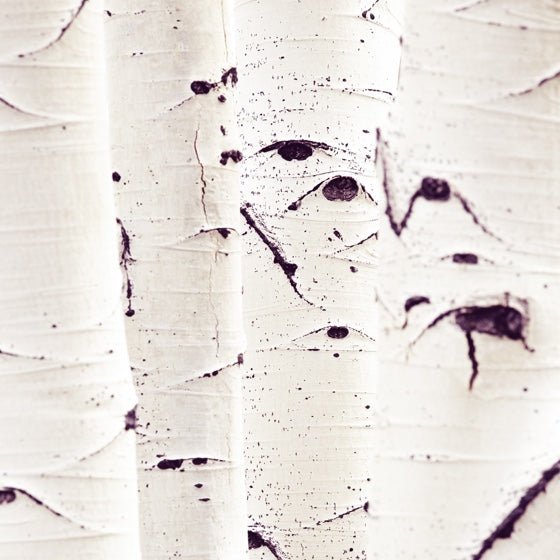
White birch
Native to North America, known for growing even in fire-damaged forests. Source of niacinamide (vitamin B3), vitamin C & fruit acids with soothing and skin-brightening effects.
White birch (Betula pendula, also known as silver birch, warty birch, European white birch or Asian white birch) is a deciduous tree native to Europe and parts of Asia. Eurasians and First Nations have used it as a medicinal plant for centuries.
....
The bark of white birch trees is rich in skin actives — betulin, lupeol, flavonoids and phenolic compounds — that promote skin health through several different mechanisms.
Studies show that birch bark extract increases skin hydration and strengthen the skin’s barrier function, reinforcing antioxidant defenses. The phenolic compounds in white birch reduce free radicals, preventing the oxidation involved in skin aging.
White birch is also rich in compounds that are known to prevent pigmentation disorders and suppress the formation of dark spots such as those caused by pollution and aging.
....
Journal of cutaneous medicine and surgery, February 2017, pages 288-298
Skin pharmacology and physiology, September 2011, pages 289-293
Plos one, January 2014, page e86147
Fitoterapia, July 2012, pages 877-882
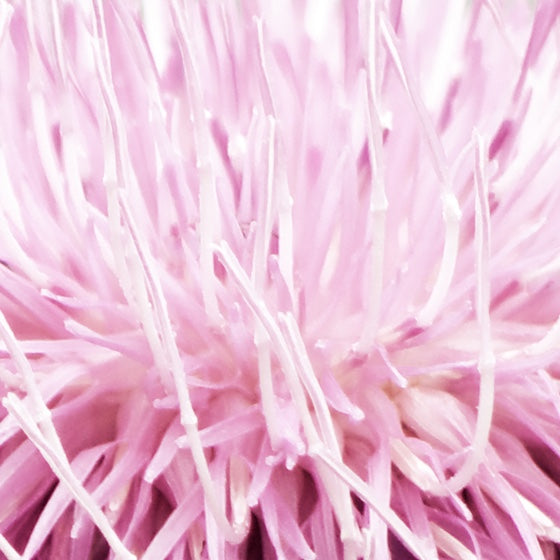
Maral root
Rare Rhaponticum plant, native to Siberian meadows. Rich in flavonoids, vitamins & adaptogenic compounds. Slows visible signs of skin stress and environmental aggressors.
Maral Root (Rhaponticum Carthamoides) is a perennial herb of the Asteraceae family that grows mainly in the mountainous areas of South Siberia, Central Asia, and China. It has a long history of use in Siberian traditional medicine and is gaining popularity as a natural skincare active.
....
Studies have shown that maral root extracts have protective and DNA repair stimulating abilities, fighting oxidative stress. The plant produces phenolic compounds and flavonoids that scavenge free radicals and prevent them from causing oxidative damage.
Maral root extracts have also been found to stimulate cells in tissue to repair the DNA damage caused by oxidative stress, possibly by activating enzymes that recognize and help remove damaged DNA. Maral root extract also increases cellular levels of superoxide dismutase, a potent natural anti-aging ingredient.
....
Oxidative medicine and cellular longevity, February 2016, pages 1-11
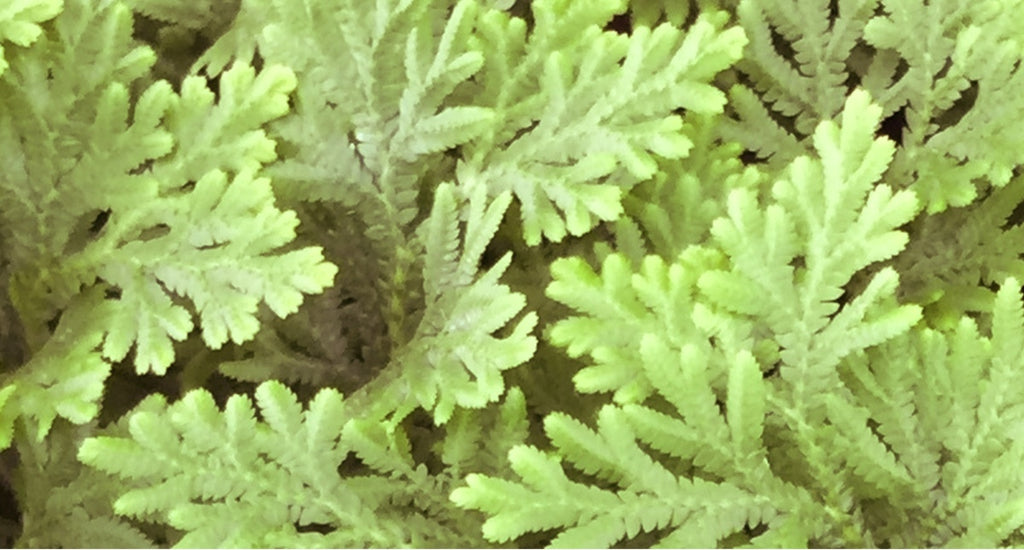
Resurrection Plant
Extremophile desert plant known for surviving extreme dehydration. Rare myconoside compounds improve skin radiance & replenish moisture barrier.
Resurrection plants are a group of extremophile plants native to Central American desert habitats with the rare ability to survive extreme drought. Our resurrection plant extract comes from Selaginella lepidophylla, a spikemoss also known as Rose of Jericho. In very dry conditions, it curls up into a tight ball, uncurling and turning green again when exposed to moisture.
....
Selaginella lepidophylla has developed molecules to survive drought stress that have unique properties to retain water and fight environmental stress. It’s particularly rich in trehalose, a plant sugar which acts as a natural stabilizer and moisturizing molecule by helping proteins retain their shape even when exposed to extreme dehydration.
Resurrection plants are also a source of several compounds with antioxidant, anti-inflammatory, and anti-carcinogenic properties. They produce phenolic compounds (flavonoids), terpenoids, and biflavonoids such as robustaflavone that prevent free radical damage and act as natural anti-aging skin actives.
....
Bioscience, March 2011, pages 44-58
Trends in Biotechnology, October 2002, pages 420-425
Oecologia, April 1983, pages 115–120
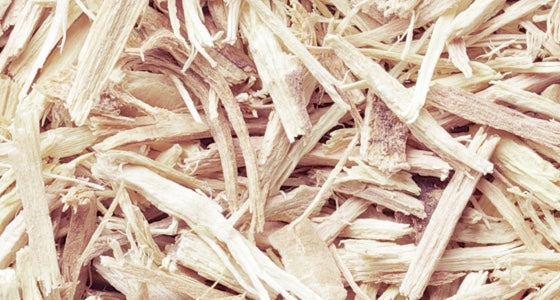
Siberian Ginseng
“Devil's shrub” growing in Central & East Asian mountain forests. Rich in eleutheroside compounds with rare antioxidant & adaptogenic properties. Soothes & enhances skin radiance.
Siberian Ginseng (Eleutherococcus Senticosus), is a small woody shrub with berries that look like blackberries. Native to Northeastern Asia, it belongs to the Araliaceae plant family.
....
Eleutherococcus Senticosus has been identified as an adaptogen, a source of potent stress-fighting compounds. Its main active, phlorizin, has been found to fight skin aging through several mechanisms. One way it does this is by improving the thickness of the epidermis, providing direct protection effect against external aggressors. It also acts as an antioxidant, reducing the overproduction of ROS (reactive oxygen species) and protecting skin against UVB-induced skin damage.
Finally, it improves the ability of the epidermis to self-renew and regenerate by increasing the expression of mRNA, which acts as a crucial cell messenger, and improving the synthesis of type IV collagen, involved in the youthfulness and elasticity of the epidermis.
....
Oxidative medicine and cellular longevity, January 2016, pages 1-8
International journal of molecular sciences, October 2018, page 3349
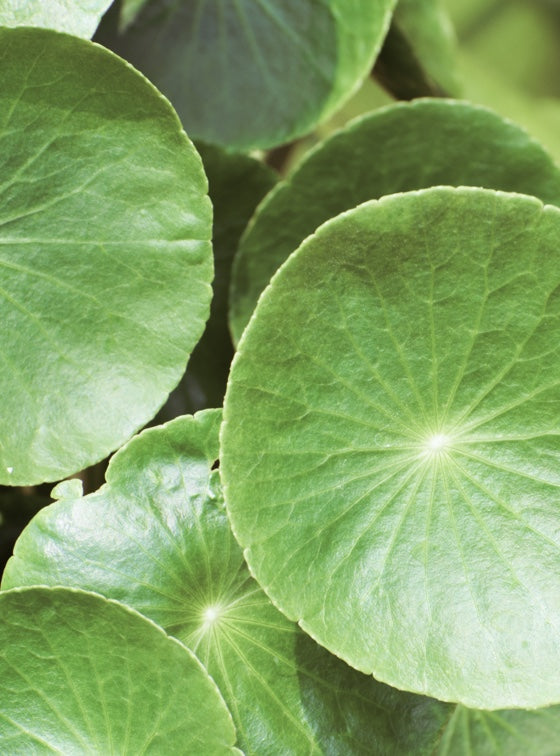
Centella Asiatica
Aquatic plant, used in Ayurveda and Chinese Medicine. Softens and soothes dry skin skin with rare botanical compounds.
Centella asiatica (gotu kola, also known as tiger grass, Brahmi, or Asiatic pennywort) is an aquatic plant indigenous to South and Southeast Asia, with culinary and medicinal uses.
....
Gotu Kola has a wide range of clinically proven benefits in skincare. It initially attracted attention for its use in the prevention and improvement of scars, containing triterpenes saponins (asiaticoside and madecassoside) that boost the healing process. Studies have shown that these compounds can also help stimulate skin collagen production and significantly improve skin hydration and the tensile strength of newly formed skin.
In addition to its triterpene saponins, Centella asiatica contains flavonoids and phenolic acid with protective and anti-aging effects, inhibiting the free radicals that cause skin aging and stimulating the dermal microvascular system. Because of its potent yet non-sensitizing properties, it’s gaining popularity as an anti-aging product for sensitive skin.
....
Bioscience, biotechnology, and biochemistry, November 2018, pages 1-8
Evidence-Based Complementary and Alternative Medicine, September 2018
Phytomedicine, April 2018, pages 110-119
Phytotherapy research, August 2014, pages 1117-1124
Advances in Dermatology and Allergology/Postȩpy Dermatologii I Alergologii, February 2013, pages 46-49
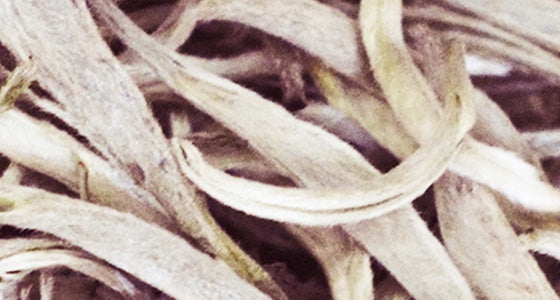
White tea
Young leaves and buds of flowering tea plant (Camellia sinensis). High in catechin polyphenols. Natural compounds replenish tired skin and fight sources of oxidative stress.
White tea is made with the most delicate young leaves and buds of the tea plant (Camellia Sinensis), an evergreen shrub native to China and other parts of East Asia. The name comes from the fine silvery hairs that are still present on the tea leaves when they are harvested to make white tea.
....
Studies have shown that Camellia sinensis is rich in compounds with protective effects against cell damage and aging. Because it’s minimally processed and made from the closed buds and young leaves of the plant, white tea preserves a high quantity of natural actives. It’s especially rich in phenolic compounds and catechins, which are some of the most extensively documented and proven natural anti-aging ingredients. One of the ways they slow down skin aging is by inhibiting the action of collagenase and elastase, proteins that break down collagen and elastin.
In addition to their anti-collagenase and anti-elastase activity, the polyphenols in tea provide a chemical defense against UV radiation, with powerful antioxidant and anti-inflammatory properties.
The EGCG catechins in tea have been shown to stimulate detoxification and reactivate dying cells in the epidermis, with a wide range of potential benefits for psoriasis, rosacea, wound healing, and fine lines.
....
Journal of Inflammation, October 2011, page 27
BMC Complementary and Alternative Medicine, August 2009, page 27
Experimental dermatology, May 2009, pages 522-526
Food Chemistry, October 2008, pages 852-858
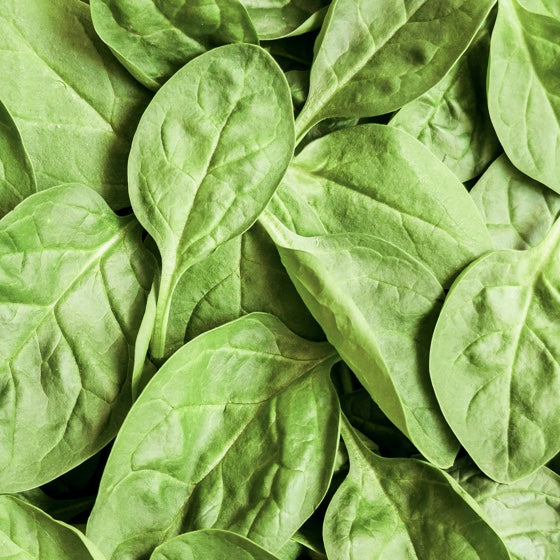
Spinach
Flowering Amaranthaceae plant. Concentrated source of skin-regenerating vitamins A and C. Soothes sensitive skin exposed to environmental dryness.
Spinach (Spinacia oleracea) is a flowering plant in the Amaranthaceae family, rich in essential micronutrients. Originally from central and western Asia, it is now grown worldwide for its health benefits as a superfood and anti-aging ingredient.
....
Spinacia oleracea is a concentrated source of flavonoids that act as antioxidants, scavenging free radicals and preventing them from causing oxidative cell aging. Studies show that the flavonoids and other phenolic compounds in spinach have valuable antiproliferative and anti-inflammatory properties that give them protective health effects. Some of these skin actives, such as flavonol glucuronides, provide strong protection against cell mutations involved in skin cancer and other illnesses.
Spinach is a rich source of vitamins A, B2, B6, C, and E, and a source for various carotenoids and lipophilic active compounds, like lutein, that improve the skin’s ability to resist UV damage.
....
Studies
Clinical Cosmetic and Investigational Dermatology, October 2016, pages 325-332
Nutrition and Cancer, 2003(2), pages 222-231
Journal of Agricultural and Food Chemistry, May 2001, pages 2767-2773
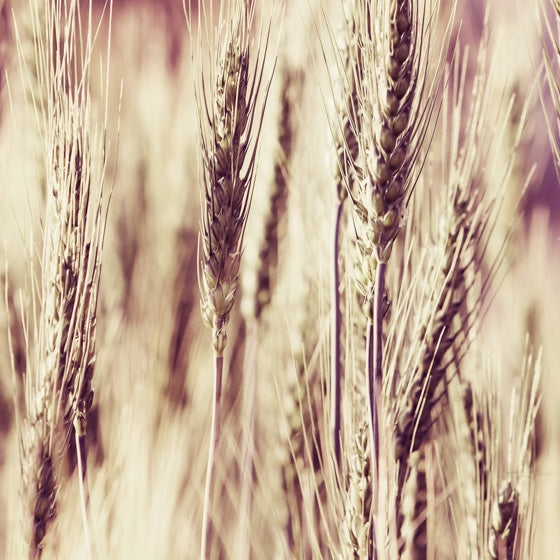
Rice Bran
From whole oryza rice seed. Concentrated source of ferulic acid. Rich in skin youth nutrients squalane, vitamin E, and essential fatty acids. Reduces visible signs of aging.
Rice bran is a natural byproduct of the rice polishing and dehusking process. It’s made up of the germ and endosperm of rice seeds (Oryza sativa), the richest part in vitamins, minerals, and antioxidant compounds, and is one of the most extensively documented skin actives used in natural skincare.
....
Rice bran is a rich source of compounds with anti-aging properties, including phytochemicals and other bioactive compounds with antioxidant effects such as ferulic acid, gamma-oryzanol and phytic acid. Ferulic acid has been identified as an especially potent anti-aging ingredient suitable for sensitive skin.
The phenolic compounds in rice bran are thought to act as antioxidants through several different mechanisms, scavenging free radicals and chelating metal ions to prevent oxidative damage to skin. They also inhibit the action of elastase and tyrosinase, preventing the loss of elasticity and melanin overproduction which may be caused by skin aging or exposure to pollutants.
....
Journal of the Saudi Society of Agricultural Sciences, April 2017, pages 127-134
Journal of nanoscience and nanotechnology, March 2011, pages 2269-2277
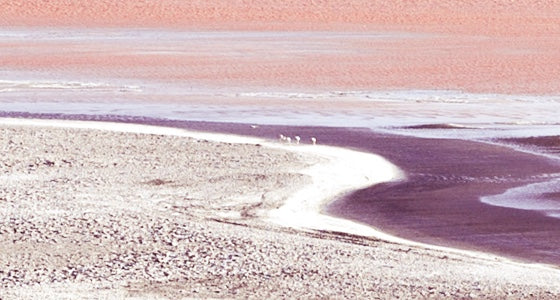
Ectoin
Extremophile compound from salt deserts and other extreme environments. Protects the skin from the negative impact of particulate matter and improves visible texture of skin
Ectoin is a natural molecule produced by extremophile microorganisms to help them resist environmental stress. Our ectoin is extracted from sustainable, non-GMO microorganisms using a certified biotech process.
....
Ectoin has been clinically shown to counteract the effects of UVA-induced and accelerated skin aging. Originally used in skincare and sun protection products as a skin softener and natural stabilizer, ectoin is now being studied for its wide range of protective and reparative effects. It acts as an anti-aging ingredient by improving skin surface structure and skin elasticity, reducing wrinkles and fine lines, and increasing skin hydration.
It’s particularly useful as a treatment for sensitive skin because it’s been found to moisturize and soothe irritated and inflamed skin without causing sensitization. Many of the benefits of ectoin come from its role as an osmolyte, which helps microorganisms maintain their cell volume against environmental stress such as extreme salty environments.
....
Skin pharmacology and physiology, June 2007, pages 211-218
Skin pharmacology and physiology, Sept-Oct 2004, pages 232-237
Microbiology, January 1993, pages 129-136
FEMS Microbiology Letters, September 1990, pages 157-162
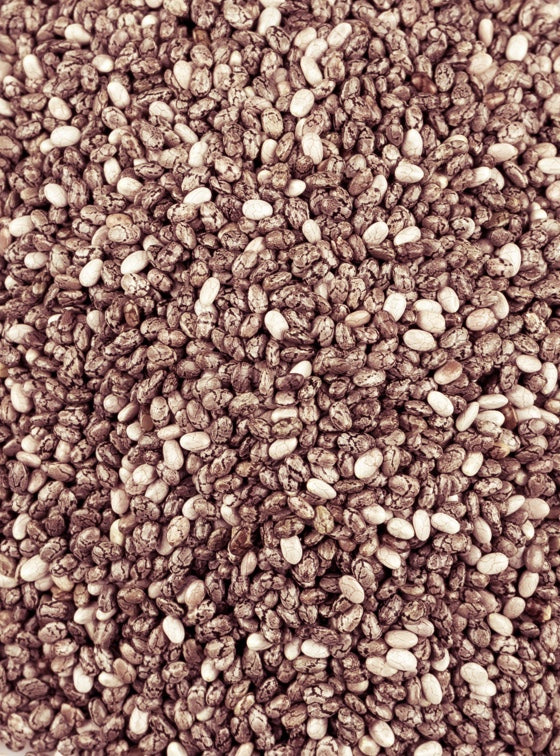
Chia seed
Salvia Hispanica, cultivated in ancient Mayan and Aztec farms. Rich source of antioxidant compounds (caffeic acid, vitamin E). Heals & repairs dry skin, acts as a barrier against environmental pollutants.
Chia seeds, known for their virtues as a superfood, are an ancient crop once used in Aztec cosmetics. They come from Salvia hispanica, a flowering plant in the mint family, native to central America.
....
Chia seeds are a rich source of isoflavones and phenolic acids with antioxidant properties, including flavonol glycosides, caffeic acid and quercetin. They produce a wide range of polyphenolic antioxidants to protect themselves against microbes and environmental aggressors, giving them natural anti-aging and anti-inflammatory properties.
Salvia hispanica seeds are a superb source of omega-3 fatty acids, which make up about 65% of their oil content — the most concentrated source of omega-3 fatty acids found in any edible plant. Clinical studies show that chia seed extracts help to significantly increase skin hydration and improve certain types of skin irritation, making them especially well suited to treat and protect sensitive skin.
....
Journal of Food Science and Technology, April 2016, pages 1750-1758
Journal of Chromatography A., June 2014, pages 43-48
Agricultural Sciences, February 2014, pages 220-226
Annals of Dermatology, May 2010, pages 143-148
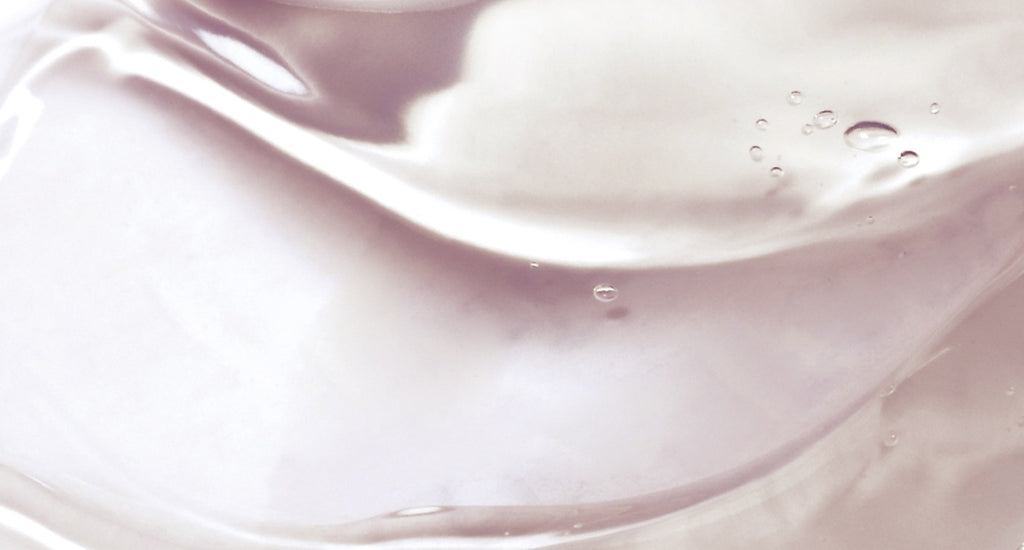
Biosaccharide-gum 4
Revolutionary protective skin matrix from sorbitol. Breathable barrier against airborne irritants and fine particle pollution.
Biosaccharide gum-4 is a derivative of sorbitol, a natural sugar alcohol extracted from a plant source. Produced through a patented biotech process, it forms a non-occlusive film to protect skin from pollution and UV rays.
....
Studies have shown that pollution and UV rays cause oxidation, inflammation, and DNA damage in skin cells. The overall effect is irritation and premature aging. It’s difficult to fight these with any one skincare product because there are so many different pollutants involved in atmospheric and domestic pollution, each with their own properties and chemical compositions.
Biosaccharide gum-4 provides global protection against pollution by forming a “breathing” matrix on skin that prevents pollutants from penetrating the epidermis. It is the only skin active to protect against such a wide range of pollutants and fine particles while letting skin breathe.
....
Clinical, Cosmetic and Investigational Dermatology, May 2017, pages 185-193
Polysaccharides Bioactivity and Biotechnology, January 2015, pages 1867-1892
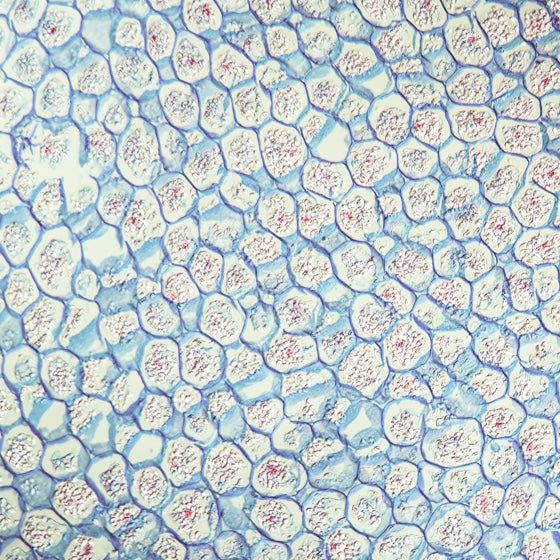
Resveratrol
Potent bioflavonoid antioxidant from itadori (Japanese knotweed), also found in red grapes, dark red & purple berries and raw cocoa. Promotes skin youthfulness and resistance to environmental stressors.
Though commonly known to come from the skin of red grapes, Resveratrol is derived from the root of Japanese Knotweed plant which is a much more powerful and plentiful renewable source.
....
Resveratrol is produced to increase the plant’s resistance to environmental stresses and, thus, has significant physiological and biological effects. Resveratrol promotes even skin tone by inhibiting tyrosinase, the key enzyme that catalyzes melanin production by oxidation.
Furthermore, studies have reported that resveratrol is a potent inducer of sirtuin, which activates proteins that associate with the aging process to increase longevity. A powerful antioxidant, resveratrol is also used as a free radical scavenger, photo protector, and soothing agent, as well as for anti-inflammatory action.
....
Journal of Drugs in Dermatology, December 2013, pages 1389-1394
Archives of Biochemistry and Biophysics, April 2011, pages 164-170
Antioxidants and Redox Signaling, December 2001, pages 1041-1064
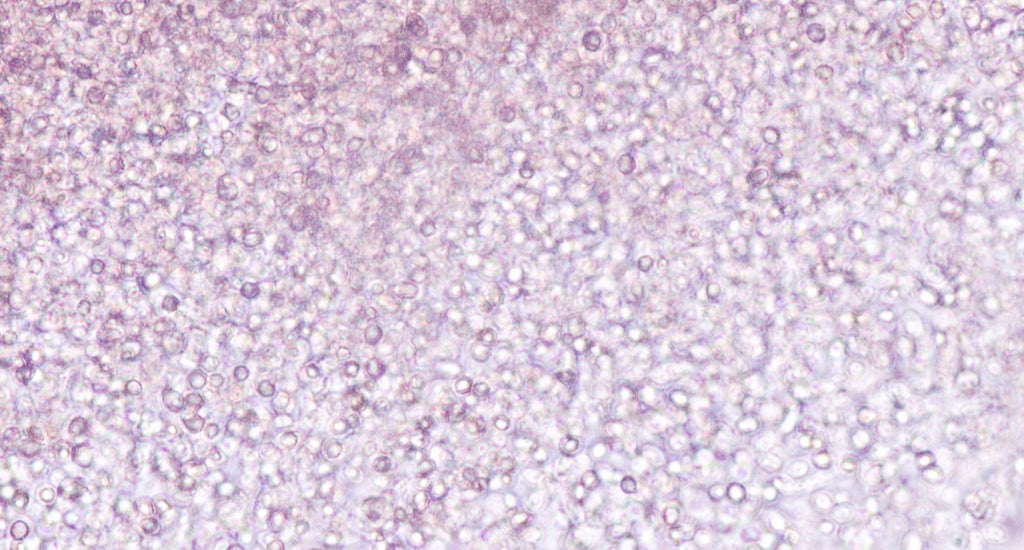
Superoxide Dismutase
Powerful natural antioxidant from barley grass, wheatgrass & other superfoods. Protects from sources of oxidative stress to reduce visible signs of aging.
Superoxide dismutase is a potent naturally occurring enzyme that prevents oxidative damage to cells. We use superoxide dismutase in the form of Dismutin PF, a highly purified aqueous solution produced from Saccharomyces cerevisiae microorganisms.
....
When cells are exposed to stressors, they respond by producing reactive oxygen species (ROS). These are thought to be a major determinant of aging and lifespan. In skin cells, higher levels of ROS damage skin tone, cause wrinkles to form, and impair wound healing.
Superoxide dismutase is a potent anti-aging ingredient and a first line of antioxidant defense against oxidative stress. It counteracts cell aging by breaking down ROS and preventing them from causing cell damage, as well as contracting the collagen lattice in the epidermis, believed to improve the youthful appearance of skin.
....
Dermatoendocrinology, July 2012, pages 232-235
Archives of dermatological research, April 2009, pages 273-287
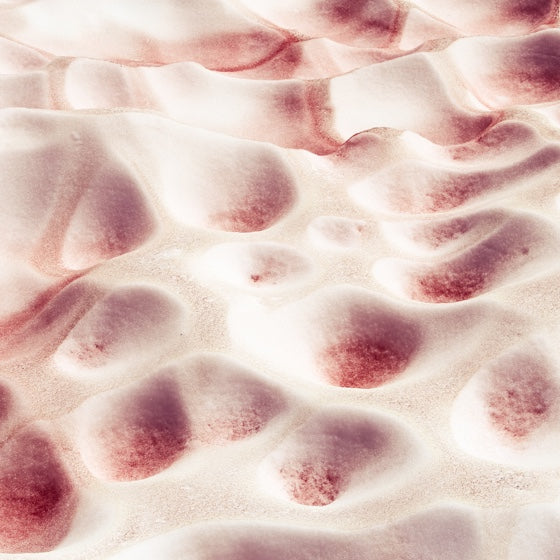
Snow Algae
Rose-tinted algae known as “watermelon snow,” and extremophile which thrives in alpine and polar cold. Rich in carotenoids (astaxanthin), peptides & hyaluronic acid. Repairs damage and increases the longevity of skin, with rare gene-activating properties.
Snow algae are a family of extremophile microorganisms (also known as watermelon snow, pink snow, red snow, or blood snow) that turn a rosy pink color in winter. Our snow algae extract is produced sustainably using Swiss biotechnology.
....
Snow algae has evolved to survive in extremely cold environments, maintaining metabolic functions at temperatures where other microorganisms would become dormant or wouldn’t be able to survive. It produces molecules that improve cellular defenses and help the body fight oxidative stress. Snow algae extract has been clinically shown to improves collagen production in the epidermis and rejuvenate the dermal epidermal junction, reinforcing the skin barrier and reducing age spots.
The watermelon pink color of snow algae comes from carotenoid pigments that it produces to protect against UV rays and absorb heat, with free radical fighting properties. It’s also a good source of alpha-tocopherol (vitamin E), a potent antioxidant and anti-aging ingredient.
....
Photosynthetic research, September 2017, pages 31-47
FEMS microbiology ecology, March 2009, pages 432-443
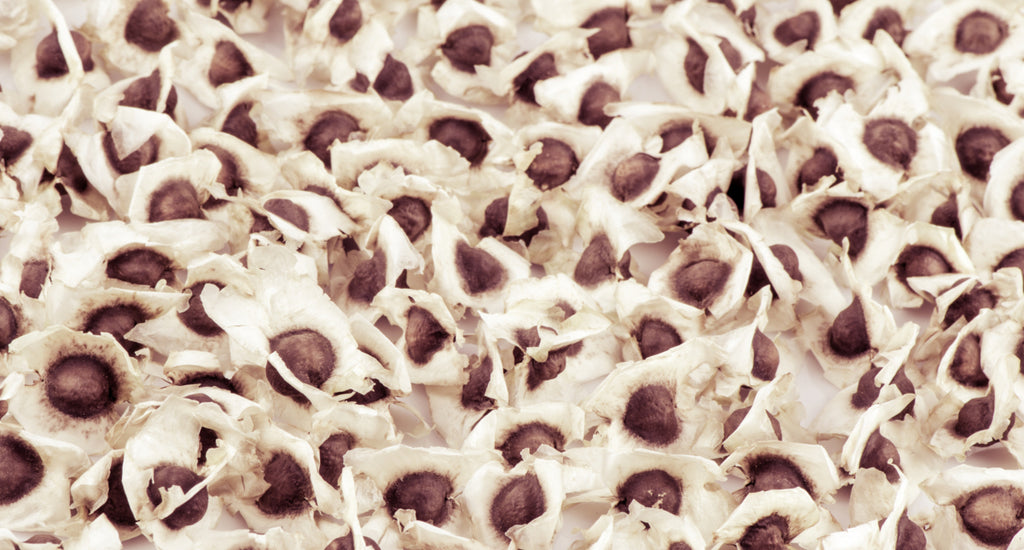
Moringa Peptide
Peptide obtained by extraction from the seeds of drought-resistant tree, Moringa oleifera. Facilitates the removal of micro-particle pollution from skin.
Our moringa peptides come from Moringa pterygosperma, a drought-resistant tree (also known as the "tree that never dies") native to tropical and subtropical regions in Africa and South Asia that has been used for centuries to produce “behen oil” for cosmetic and medicinal ointments.
....
Moringa seed has long been known to have purifying properties and is used in developing countries as a biodegradable, environmentally-friendly water purifying agent. Applied topically, moringa peptides act as a skin purifying and anti-aging compound by trapping particle pollution and making it easy to remove. By stopping toxins and pollutants from entering the epidermis, they prevent damage to epidermal DNA, skin tone and elasticity.
....
Journal of Food Science and Technology, December 2017, pages 4268-4276
International Journal of Pharmaceutical and Chemical Sciences, Jan-March 2013, pages 415-423
Biomedical Research, December 2012, pages 127-130
SOFW Journal, 2003, pages 49-57